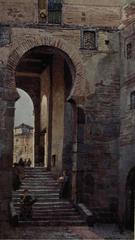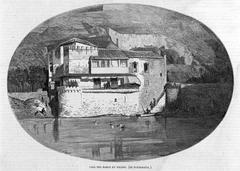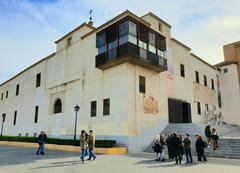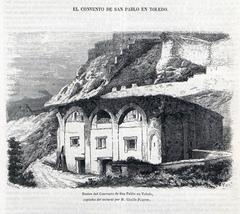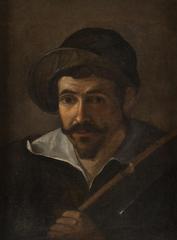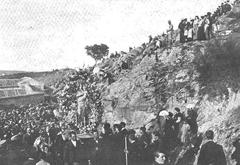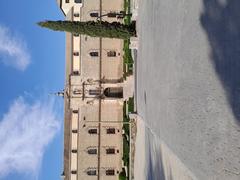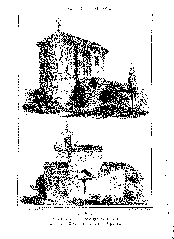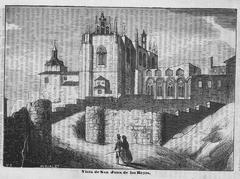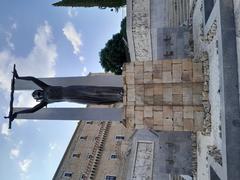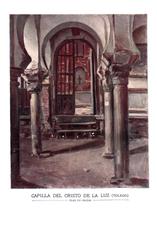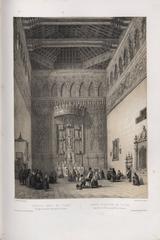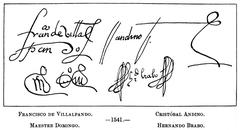
Church of San Román, Toledo, Spain: Visiting Hours, Tickets, and Historical Guide
Date: 04/07/2025
Introduction
The Church of San Román, nestled in the historic heart of Toledo, Spain, stands as a vibrant testament to the city’s layered cultural, religious, and architectural history. Consecrated in 1221 by the influential Archbishop Rodrigo Ximénez de Rada, this remarkable church is a symbol of Toledo’s identity as the famed “City of Three Cultures,” where Christian, Muslim, and Jewish traditions flourished side by side (Spotting History, Toledo Turismo). Today, it is not only an exceptional example of Romanesque and Mudéjar architecture but also houses the Museum of the Councils and Visigothic Culture, making it a must-visit for anyone interested in Spain’s medieval heritage.
Table of Contents
- Early Origins and Medieval Foundations
- Architectural and Artistic Evolution
- San Román’s Role in Toledo’s Religious and Civic Life
- Restoration and Museum Conversion
- Visiting Information: Hours, Tickets, and Accessibility
- Highlights of the Church and Museum
- Nearby Attractions and Travel Tips
- Frequently Asked Questions (FAQ)
- Conclusion
Early Origins and Medieval Foundations
The Church of San Román is one of Toledo’s oldest religious structures, with origins dating back to the 12th century. Officially consecrated in 1221, it is traditionally associated with the coronation of Alfonso VIII in 1166, underlining its central importance in both the religious and political spheres of medieval Castile (Spotting History). Archaeological evidence also points to earlier Visigothic and Roman occupation of the site, reinforcing its legacy as a place of enduring sacred significance (Toledo Turismo).
Architectural and Artistic Evolution
Romanesque and Mudéjar Synthesis
San Román exemplifies the fusion of Romanesque solidity with Mudéjar decorative artistry, a hallmark of Toledo’s unique medieval architecture. The church features a three-nave basilica layout, separated by striking horseshoe arches with alfiz—an Islamic architectural motif adapted by Christian craftsmen (chasingwhereabouts.com). The use of Visigothic and Roman spolia in columns and capitals illustrates the church’s layered construction history.
Its Mudéjar tower, built from brick and stone, stands out for its ornamental geometric patterns and blind arcades, reflecting the multicultural influences that flourished in Toledo. The semicircular apse and much of the brickwork also exhibit Mudéjar traits, while later Renaissance interventions added Plateresque elements, particularly in the main chapel (Spain is Culture).
Romanesque Frescoes and Decoration
The interior is adorned with exceptional 13th-century frescoes—among the southernmost Romanesque murals in Spain. These depict biblical scenes, the Four Evangelists, saints, and the Last Judgment, all rendered in vibrant earth tones and bordered by Mudéjar geometric motifs (Spotting History). The combination of Western Christian and Mozarabic iconography offers a unique insight into the cultural and artistic syncretism of medieval Toledo.
San Román’s Role in Toledo’s Religious and Civic Life
San Román has long served as a focal point for religious, political, and community life in Toledo. Its strategic location within the city walls and associations with key historical events—such as the coronation of Alfonso VIII—underscore its enduring spiritual and civic significance (Arteguias). The church’s dedication to Saint Romanus, a revered Visigothic martyr, further highlights its deep roots in early Spanish Christianity.
Restoration and Museum Conversion
During the 16th century, the church underwent significant renovations led by Renaissance architect Alonso de Covarrubias, who introduced new apse designs and a Plateresque dome while preserving the medieval core (Spotting History). The remarkable frescoes were concealed for centuries, only to be rediscovered and restored in the 20th century.
Since 1969, San Román has housed the Museo de los Concilios y la Cultura Visigoda (Museum of the Councils and Visigothic Culture), which preserves and interprets the Visigothic heritage of Toledo—once the capital of the Visigothic kingdom (Museo de los Concilios y la Cultura Visigoda). The museum’s displays include liturgical objects, epigraphic stones, and replicas of the Guarrazar treasure, offering visitors an immersive journey into early Christian Iberia (Spain.info).
Visiting Information: Hours, Tickets, and Accessibility
Opening Hours
- Tuesday to Saturday: 10:00–14:30 and 16:00–18:30
- Sunday: 10:00–14:30
- Monday: Closed
- Note: Opening times may vary on public holidays; check the official museum website or Toledo Tourism Portal for current details.
Tickets and Pricing
- Standard Admission: €6 (includes access to the Santa Cruz Museum)
- Free Admission: Wednesdays, Saturday afternoons (16:00–18:30), and Sunday mornings (10:00–14:30)
- Discounts: Available for students, seniors, and groups
- Children under 12: Free
- Where to Buy: Onsite or online via the official museum website
Accessibility
- The church is wheelchair accessible, with ramps at the main entrance and adapted restrooms.
- Some interior areas may have limited access due to the historic structure.
- Visitors with mobility needs are encouraged to notify staff in advance.
Guided Tours and Events
- Guided Tours: Offered in Spanish, English, and French (check times and availability in advance)
- Special Events: The museum periodically hosts concerts, exhibitions, and educational workshops.
Highlights of the Church and Museum
- Mudéjar Tower: A prime example of Toledan Mudéjar style, featuring decorative brickwork and horseshoe arches.
- Romanesque Frescoes: 13th-century murals illustrating biblical scenes and saints, preserved and displayed throughout the church.
- Visigothic Artifacts: Museum exhibits include liturgical objects, funerary offerings, and the famed Guarrazar crown replicas.
- Architectural Details: Three-nave basilica, horseshoe arches, Visigothic spolia, and Renaissance Plateresque dome.
- Atmosphere: The church is less crowded than other Toledo sites, offering a tranquil setting for contemplation and discovery.
Nearby Attractions and Travel Tips
- Location: Calle de San Román, s/n, 45002 Toledo, Spain—situated on one of Toledo’s highest hills, offering panoramic city views (en.wikipedia.org).
- Getting There: Reachable on foot from the main square (Plaza de Zocodover) or by public bus/taxi from the train station. The area features narrow, cobbled streets; GPS-enabled apps like GPSmyCity are recommended (gpsmycity.com).
- Nearby Sites: Toledo Cathedral, Alcázar, Church of Santo Tomé, Synagogue of El Tránsito, Mosque of Cristo de la Luz (spain.info).
- Visitor Tips: Wear comfortable shoes for hilly terrain. Plan visits for mornings on weekdays to avoid crowds. Photography is allowed without flash.
Frequently Asked Questions (FAQ)
Q: What are the Church of San Román’s visiting hours?
A: Tuesday to Saturday 10:00–14:30 and 16:00–18:30; Sunday 10:00–14:30; closed Mondays.
Q: How much is admission?
A: €6 standard (includes the Santa Cruz Museum); free at designated times.
Q: Is the church accessible for visitors with reduced mobility?
A: Yes, with ramps and facilities, though some areas may have limited access.
Q: Are guided tours available?
A: Yes, in multiple languages; check the museum or tourism portal for schedules.
Q: Can I take photos inside?
A: Yes, but flash use is restricted to protect the frescoes.
Q: What are the best nearby attractions?
A: Toledo Cathedral, Alcázar, Church of Santo Tomé, El Tránsito Synagogue.
Conclusion
The Church of San Román is a jewel of Toledo’s historic center—a unique blend of Romanesque, Mudéjar, and Visigothic elements, displaying stunning medieval frescoes and housing treasures of early Spanish Christianity. Its tranquil atmosphere, rich artistic heritage, and educational value make it an essential stop for anyone exploring Toledo’s story as a crossroads of civilizations.
Plan your visit by checking current hours and ticket options. For a deeper experience, download the Audiala app for audio-guided tours, and stay updated on cultural events via official tourism channels.
Images and Virtual Resources
Alt tag: Church of San Román exterior view, Toledo historical site
Alt tag: Romanesque frescoes inside the Church of San Román
Alt tag: Visigothic period artifacts at the Museum of Councils and Visigothic Culture in Toledo
Related Resources
Official Links
- Museum of the Councils and Visigothic Culture
- Toledo Tourism Portal
- Spain is Culture
- Spain.info - Church of San Román
- Whichmuseum.com - Church of San Román
References
- Spotting History
- chasingwhereabouts.com
- Toledo Turismo
- Museo de los Concilios y la Cultura Visigoda
- Spain is Culture
- Spain.info
- whichmuseum.com
- Arteguias
- en.wikipedia.org
- gpsmycity.com
- toledo-travelguide.com


